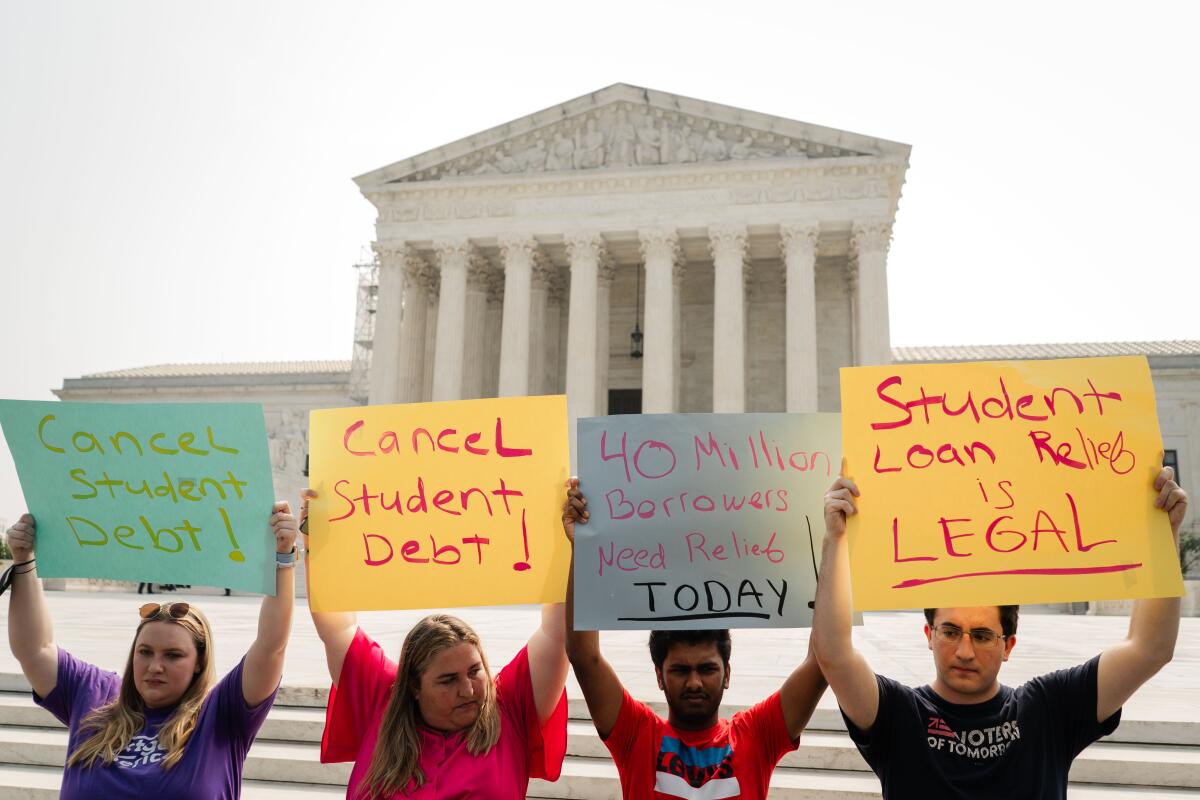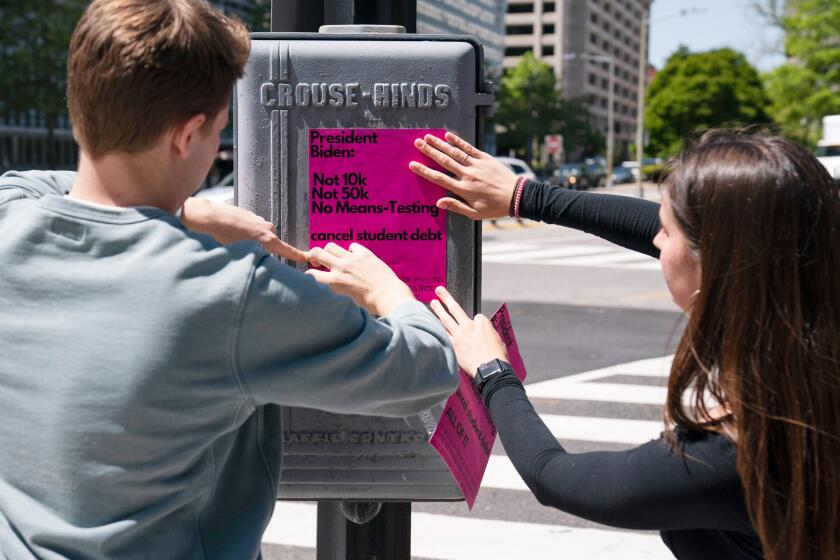Editorial: Supreme Court ruling on student loan debt relief means Congress must now act

- Share via
It’s not surprising but still deeply disappointing that the U.S. Supreme Court has ruled against the Biden administration’s plan to provide more than $400 billion in student loan forgiveness. Compounding the injustice is the fact that a divided Congress is unlikely to fill the vacuum left by the decision with remedial legislation. But advocates for debt relief should continue to press their case, not just at the Capitol but in next year’s elections.
Crushing student debt is a burden not just on former students but on the national economy. The pain was exacerbated by the COVID-19 pandemic, which is why the Biden administration acted, claiming authority under the Higher Education Relief Opportunities for Students (HEROES) Act of 2003. That law empowers the secretary of Education to waive or modify loan provisions in response to a national emergency.
The Biden plan was not an indiscriminate bonanza but rather was targeted to help those most in need of relief. For borrowers with an annual income of less than $125,000, the Education Department would forgive up to $10,000 in student loans. Recipients of Pell Grants, a form of financial aid for lower-income students, could qualify for up to $20,000 in loan cancellation. The scope of the problem was evident in the fact that 26 million borrowers applied for relief.
Erase $10,000 in debt per person? $50,000? Biden is expected to announce his plan for burdensome student debt, but the problem will only be compounded unless we reform how much students spend on college.
But in a 6-3 decision Friday, the conservative majority on the Supreme Court held that the administration exceeded its authority. In response to a lawsuit brought by Nebraska and five other Republican-led states, Chief Justice John G. Roberts Jr. wrote that the HEROES Act allows the secretary to “waive or modify” provisions, “not to rewrite that statute from the ground up.”
The solicitor general made a persuasive case that the administration was acting within its authority. As Justice Elena Kagan wrote in a dissent joined by Justices Sonia Sotomayor and Ketanji Brown Jackson: “The statute provides the Secretary with broad authority to give emergency relief to student-loan borrowers, including by altering usual discharge rules. What the secretary did fits comfortably within that delegation.”
She emphasized that the delegation of authority is not some tucked-away provision but “is at the statute’s very center, in its ‘waive or modify’ language.”
Inaction and obstruction on Capitol Hill have often forced presidents to respond to pressing national problems with executive action. In this case, that action was grounded in a long-standing law. Now it is the duty of Congress to ensure that this relief program is carried out.
Reacting to Friday’s decision, President Biden said he will pursue some relief for student loan borrowers based on another law, the 1965 Higher Education Act. This backup plan may take longer to establish than the plan blocked by the court — which is all the more reason candidates for Congress next year should be pressed to restore the lifeline Biden tried to extend.
More to Read
A cure for the common opinion
Get thought-provoking perspectives with our weekly newsletter.
You may occasionally receive promotional content from the Los Angeles Times.











